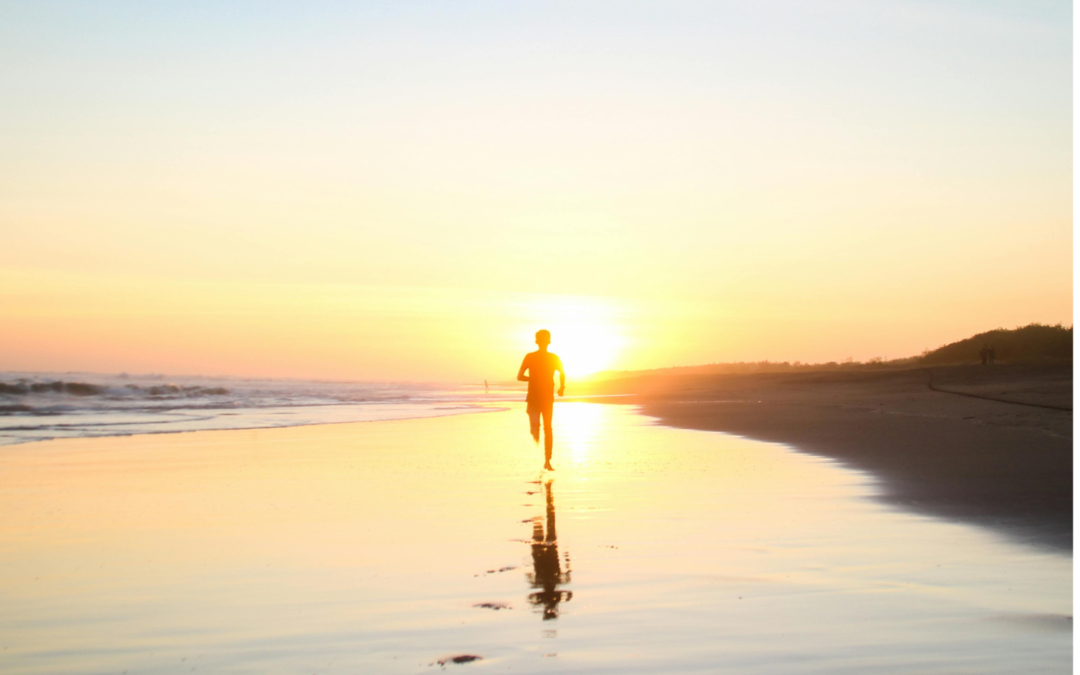
11 Tips for Your Summer Running
By Coach Adolfo Salgueiro
Exercising in the heat will inevitably elevate your heart rate and elevate your needs for hydration. This means that with more effort you will accomplish less. The sooner you accept it, the quicker you will adjust to your new reality of running in summer.

You must understand what’s happening in your body during the summer before you can adapt and progress (Photo Pexels)
Running writer Brownyng Griffiths, puts it this way in her Polar blog: “After all, exercise should be a celebration of your body’s capabilities, not a battle against the elements. So, stay cool, have fun, and keep moving”.
This said, here are 11 tips to take into consideration to improve, enjoy and be safe during your summer running:
1 – Adjust your intensity: If you can take one thing from this blog post, let it be this one: The body keeps your skin cool by circulating blood. The hotter you get, the more blood pumping is needed, thus, a faster heartbeat, thus, you work harder, thus you will tire faster, thus, accept it and adapt. Your performance won’t be the same, but if your main running goal is not coming up next week, you have enough time to adjust your intensity to your reality.
2 – Be intentional about your hydration: Hydration is not just for when your Garmin is running. Intentionality is the name of the game. When you hit that start button you should have been consuming a balanced mix of water and electrolytes throughout the day. And not just during running days but every day. Same applies to post-running rehydration. You don’t have to replenish every drop as you lose it, but you must understand what your body requires to function properly.
3 – Plan your water stations in advance: know where the water stops are, what gas stations are open at the time you run or plant your water on the route ahead of time. If you are not sure about will be available, carry what you will need. There are countless options available in your local running store. Running holding a bottle in your hand should be avoided unless it means no water.
4 – Overhydration is a life-threatening condition: It may be counter intuitive, but you can drink yourself to death. Hyponatremia is a potentially fatal condition where an individual’s level of sodium gets so diluted by the combination of over guzzling of water and not replenishing electrolytes that the body’s electrical system fails. Understand how much water you need and/or can manage.
5 – Your body should adapt. Be patient: I’ve read experts stating the body takes about two weeks to adapt to running in the heat. In my experience it takes much longer. But if you are patient, understand your output will not be the same as in benevolent weather, and remain constant, your body will eventually acclimate and improve its ability to remain cool.

The right clothing in the right environment can make all the difference (Photo: Retha Ferguson, Pexels)
6 – Know your environment (BE FLEXIBLE): Knowing the weather for your run is just a click away. There is no excuse to be unprepared on a hot and/or humid run. Pushing back or rescheduling your run may be the wise choice. Or jumping onto the dreaded treadmill. Don’t just check the temperature, but also the heat index, which measures how hot it feels outside when combining air temperature and relative humidity. Overlooking it may get you into the danger zone.
7 – Choose light-colored clothing: I’m sure your dark shirt is beautiful, and that black hat from that important marathon will raise your profile with your running buddies, but it is about basic physics. Dark colors absorb the heat of the sun and get hotter while light colors reflect it and are cooler. That simple.
8 – Wear the right clothing: Breathable, moisture-wicking clothing will aid sweat evaporation and thus, cooling of the skin. Wear as little as you can feel comfortable with. Avoid tight materials that will stick to the body and hinder evaporation. Remember that sweat and evaporation is what will keep you cool and healthy.
9 – Know your route: The middle of the summer is not the time for exploration. You don’t want to find yourself lost and short on hydration in an area where there’s not another soul or a shaded area to be found. Know where you are going, know where the water is, know where the shaded areas are. This could be the difference between success and disaster.
10 – Understand your body signals: Heat will affect us all. It is a matter of the degree to which it will happen. It is not an if, but a when. Learning to recognize dizziness, cramps, cold sweats, or fatigue could help you identify heat exhaustion or the dangerous heats stroke. This is not the time to show your machismo by plowing through a hard workout when you are exhausted.
11 – Protect your body: It is not just about the sunscreen. Your eyes, your head and your face also need protection during the brutal summer runs under the sunlight. Wearing sunglasses and a cap/hat, even when it is cloudy, is always a good decision.
Keep on moving, keep on training, remain constant. Those who do are the ones that will set up PRs during the Fall/Winter running season.
